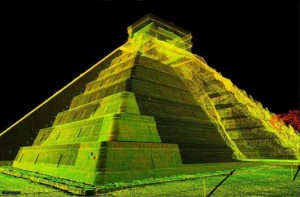 It is no longer science fiction to use the newest information technology and bio-technology techniques (as we have reported here on WCHV in the past) to help and preserve the World Heritage Sites. The reality is that today archeologists, scientists, and innovators from many different disciplines work together with the same goals: saving and preserving the world heritage sites for the future generations.
It is no longer science fiction to use the newest information technology and bio-technology techniques (as we have reported here on WCHV in the past) to help and preserve the World Heritage Sites. The reality is that today archeologists, scientists, and innovators from many different disciplines work together with the same goals: saving and preserving the world heritage sites for the future generations.
Now, a non-profit organization in the United States called CyArk – which stands for Cyber Archive – has an ambitious plan to scan hundreds of the planet’s world heritage sites with a 3D laser. CyArk wants to digitally preserve 500 world heritage sites within the next five years. Late last month during a special conference in London (October 20-22, 2013), the organization officially announced its plans.
If you think this is an almost impossible task, CyArk begs to differ as it has already scanned 100 sites around the world, including Mount Rushmore in South Dakota, Tikal in Guatemala and Pompeii in Italy. Sites are scanned using the latest laser technology, which can plot millions of points of data. CyArk collects all the information and then archives it online, where it is free for the public to access. Then any one from around the world can go online and see the information on monuments through photos, videos, animations, and virtual tours. CyArk’s 3D scanners have a range of hundreds of feet and since everything is digitally captured and stored, they can scan the site from all different angles in a fraction of time that it takes to do the same thing using traditional methods.
CyArk will keep a digital map of all locations scanned before (as the organization announced) these sites are ravaged by “nature” including flooding, acid rain, earthquakes, or “man” including conflicts and acts of terrorism. CyArk believes in leaving a digital legacy for future generations after some buildings are long gone, but it is also about empowering local communities connected to these sites as reported by Metro, a UK newspaper.
During a recent TED Conference, Ben Kacyra, the inventor of the 3D laser Technology which is used by CyArk and the founder of the organization gave a talk about his plans and how he and his wife came to start the organization. The idea for CyArk was born out of the destruction in 2001 by the Taliban of the two Bamiyan Buddhas. The Buddha statutes in Afghanistan were carved into a sandstone cliff face in the 6th century, and one of the Buddhas was actually 55m tall. Ben Kacyra says that there was no detailed documentation of the Buddhas and he didn’t want other monuments to suffer a similar fate. Kacyra also talks about the great loss of cultural information which occurred in the 2003 earthquake in the city of Bam in Iran. In fact, Kacyras and CyArk greatly feel concerned about the sites in areas of turmoil, conflict and war.
During the TED talk, Kacyra also talked about how CyArk’s data has already proved very crucial. When a part of the Kasubi Tombs in Uganda – a Unesco World Heritage Site that we have reported on here at WCHV – was destroyed in a suspected arson attack in 2010, the UNESCO and Ugandan authorities approached CyArk and requested the information and data the organization had already gathered. The plan is to restore the buildings using this data.
CyArk states that the selection of the remainder of the 500 monuments will be based on a number of factors, including the short-term risk of destruction and the impact its preservation will have on the surrounding community. The date and all the information that CyArk gathers is stored in a safe place. A gold copy of archive data is kept in a bunker 220 ft (67m) below the ground in Pennsylvania by records storage company Iron Mountain.















